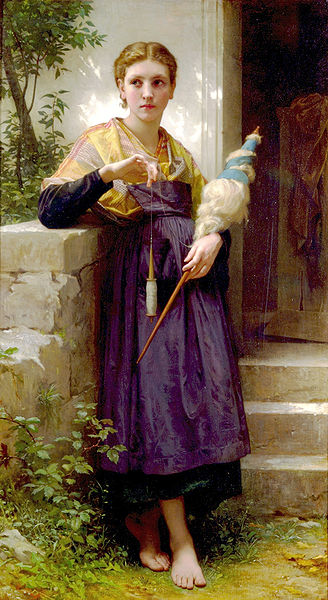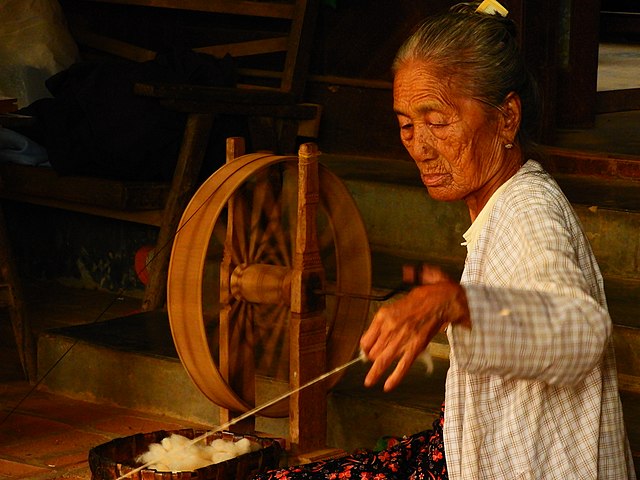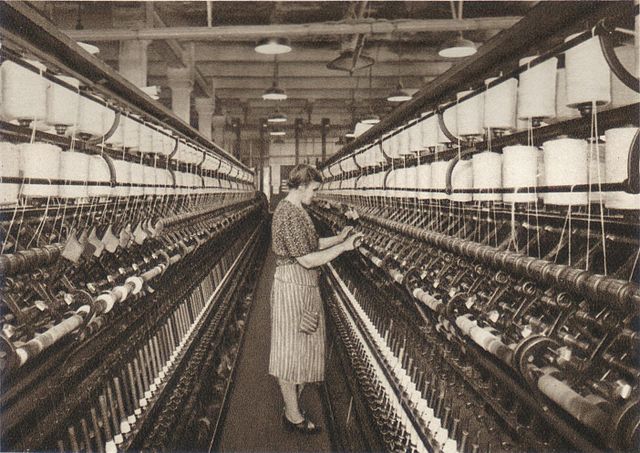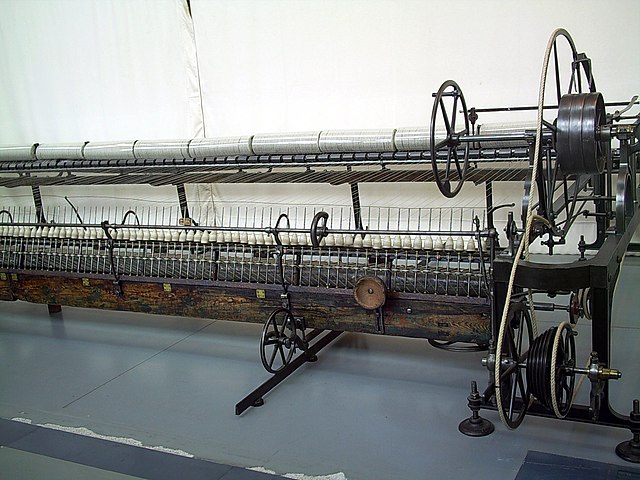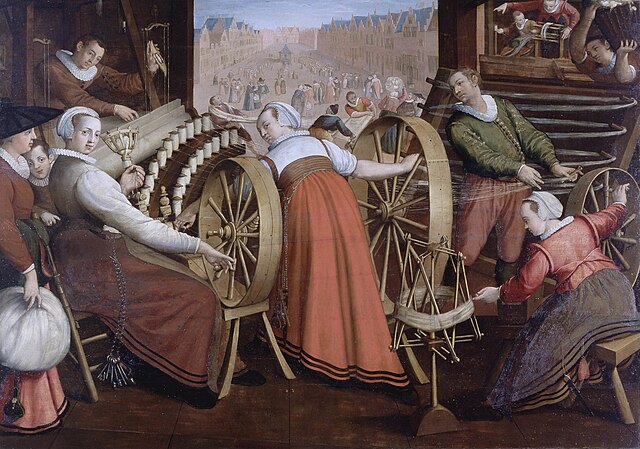Spinster is a term referring to an unmarried woman who is older than what is perceived as the prime age range during which women usually marry. It can also indicate that a woman is considered unlikely to ever marry. The term originally denoted a woman whose occupation was to spin. A synonymous term is old maid. The closest equivalent term for males is "bachelor" or "confirmed bachelor", but this generally does not carry the same connotations in reference to age and perceived desirability in marriage.
The Spinner by William-Adolphe Bouguereau shows a woman hand-spinning using a drop spindle. Fibers to be spun are bound to a distaff held in her left hand.
Monument to Peg Woffington (1720–1760) in St Mary's church, Teddington which describes her marital status
Spinning is a twisting technique to form yarn from fibers. The fiber intended is drawn out, twisted, and wound onto a bobbin. A few popular fibers that are spun into yarn other than cotton, which is the most popular, are viscose, animal fibers such as wool, and synthetic polyester. Originally done by hand using a spindle whorl, starting in the 500s AD the spinning wheel became the predominant spinning tool across Asia and Europe. The spinning jenny and spinning mule, invented in the late 1700s, made mechanical spinning far more efficient than spinning by hand, and especially made cotton manufacturing one of the most important industries of the Industrial Revolution.
Traditional spinner in her family's house in Old Bagan, Myanmar (2019).
Ring spinning
Mule spinning
1595 painting illustrating Leiden textile workers

